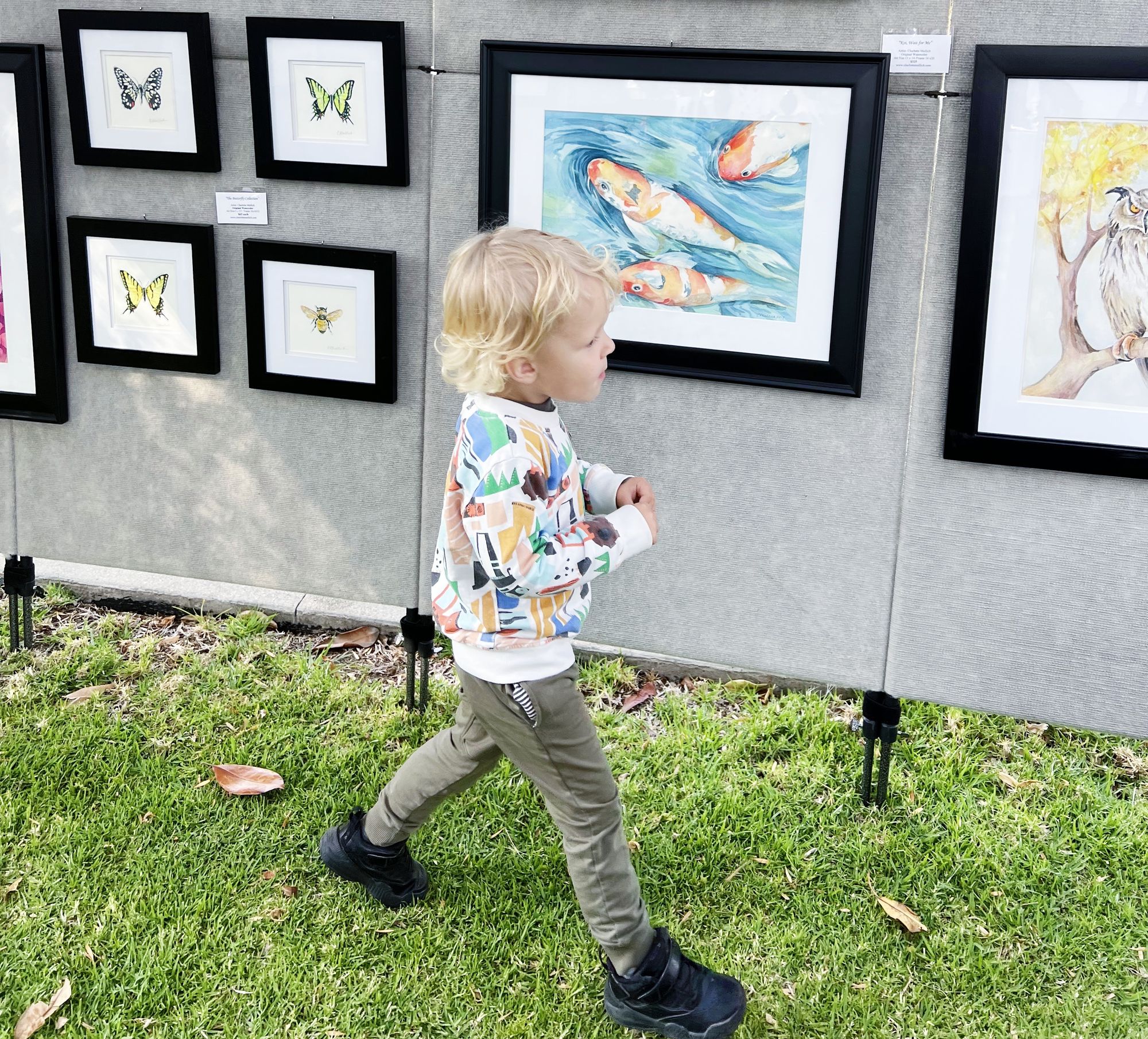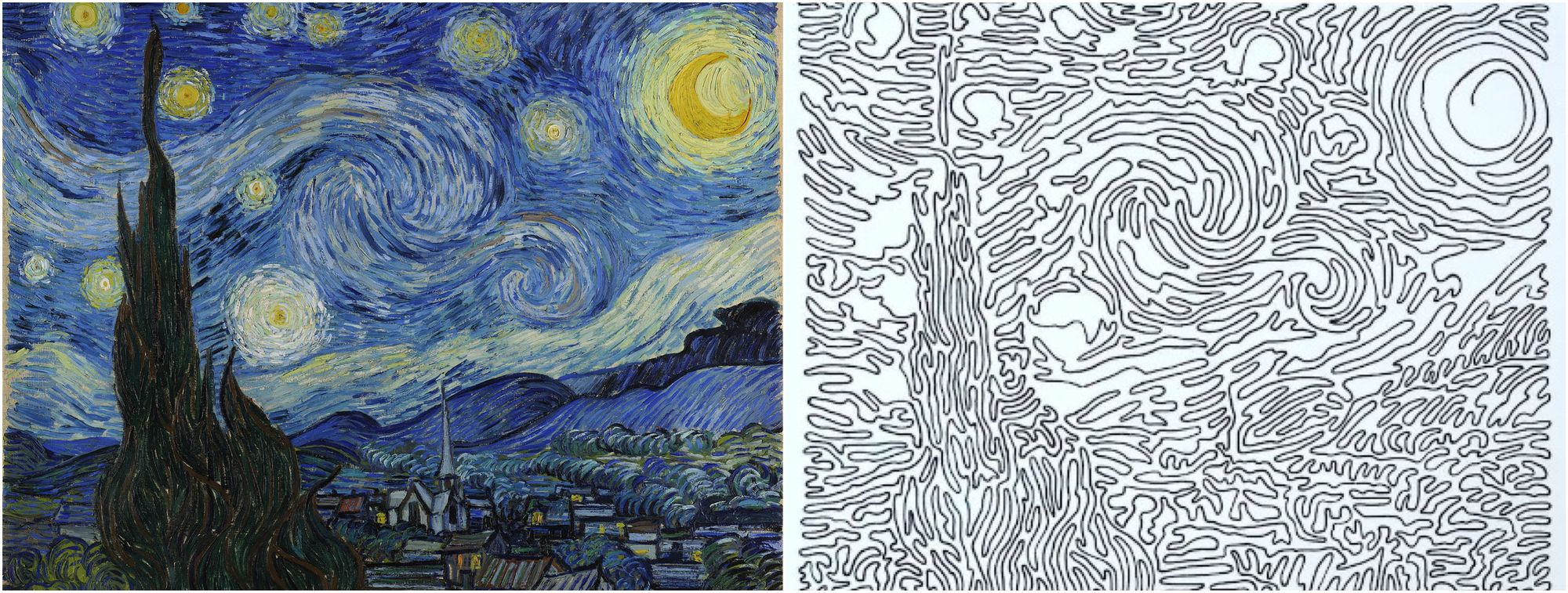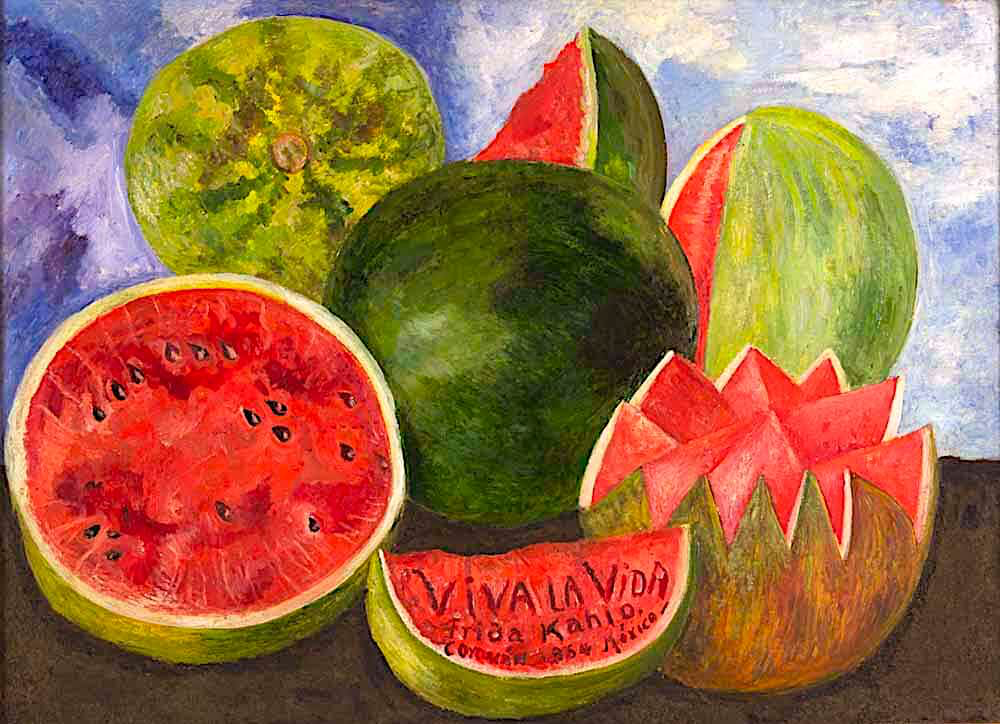Let's Talk about Art
This article will provide you with vocabulary and fundamentals to start inspiring conversations about visual art

Art is one of those intimidating topics that people tend to avoid. Unless you’ve studied art in school, chances are you feel overwhelmed by it and try to avoid conversations about it. Many of my friends never visit museums because they feel as if they do not understand and, therefore, do not enjoy art.
However, I insist that art is for everyone. Being both an expression and a source of inspiration, it can serve as a tool to unite people. It helps people express, experience, and work through powerful emotions and complex concepts. Visual art, dealing with images, has the potential to communicate ideas directly to our brains without the complexity of language, avoiding possible confusion and misunderstandings.
To make it easy for anyone to discuss art, I’ve created a mini-course, “Conversations about Art,” for my ESL conversation students. I’ve also decided to share some of the theory here to make it available for a slightly wider audience.
This little guide will help you navigate the world of visual art and confidently express your vision so that you can enjoy inspiring, creative conversations about art.
All works of art can be discussed in terms of these three aspects:
- Form
- Subject Matter
- Content
Form refers to the overall structure of the piece of art. It covers such aspects as
- Line and perspective/dimension
- Color, light, and darkness
- Shape, form, and space
- Texture and pattern
- Composition or design
Line and perspective
Line can be thick or thin, long or short, loose or controlled, solid or broken, smooth or agitated. It can create forms and shapes using outline or contour, or it can be implied, directing our eye movement and attention.
Lines can divide space or connect things. Lines can communicate movement or emotional state.

The line is also fundamental to creating three-dimensional space on a two-dimensional surface.
One-point linear perspective is created by drawing lines in such a way that they seem to form parallel lines receding to a single point on the view's horizon, which is called the vanishing point.

In the picture above, the doorframe is the vanishing point. That's where all of the lines would meet.
The two-point linear perspective has two vanishing points.

Color, light, and darkness
Another way to create an illusion of deep space is atmospheric perspective. Objects that are far away from the viewer appear less distinct since the atmosphere reduces the contrast between light and dark.

In Leonardo Da Vinci's most famous painting, the trees in the background appear somewhat blurred, whereas the woman in the forefront has much more contrast, which creates a feeling of distance in a three-dimensional space.
Colors can be bright or dimmed, light or dark, complementary or analogous, cold or warm, realistic or surreal, natural or unnatural.
Here's another version of the recognizable wave we saw earlier. This is the original, and unlike the black-and-white line drawing above, it is colored.

You can see how one could compare and contrast these two works in a conversation, expressing one's vision of how such aspects as color and line inform this work of art.
Or, here's another pair.

Using complementary colors, Van Gogh is able to create contrast and convey emotional tension. Whereas its black-and-white variation relies purely on the line to communicate its message.
I am not going to go deep into color theory here. Let me share this video instead.
Shape, form, and space
Shape refers to a two-dimensional area that can be measured in terms of height and width. Square, circle, triangle, oval – these are shapes.
Form, on the other hand, is something that occupies a three-dimensional volume. Cylinder, cube, pyramid – these are examples of form.
Negative space refers to the background around the objects on the work of art.

Texture and Pattern
Texture is the tactile quality of a surface. It can be rough or smooth, hard or soft, coarse or fine. Art can both have/show texture or create an illusion of texture, in which case it is called visual texture.
The pattern is any repeated formal element. By systematic and repetitive use of the same line, shape, color, or texture, artists create recognizable patterns that are often used as a decorative tool.

Composition
Composition or design is the way formal elements are organized.
It can be symmetrical or asymmetrical, balanced or unbalanced, heavy and busy, or light and airy.

An asymmetrical composition can be balanced by achieving the same visual weight of the two sides.

An unbalanced composition can create a sense of tension or a feeling of unease, adding to a work of art’s emotional or psychological effect.

Subject matter
Discussing subject matter is the easiest route to take in conversations about art since it refers to what is literally depicted in any given work of art.
When a subject matter is recognizable and is depicted in a work of art as it would appear in the real world – the work is said to be representational. Otherwise, it is said to be nonrepresentational or nonobjective.
The more a work of art resembles real things in the real world, the more realistic it is. The less it resembles the world around us, the more abstract it is. Abstract art does not aim at copying the world but rather breaks it into basic elements, reducing the world to its essential qualities.

"Guernica" shows the tragedies of war. This abstract art captures the reality of war better than any realistic painting ever could. Broken into its essential elements, the pain and suffering of innocent civilians become almost inhumane, demonic in its emotional heaviness. Picasso wanted to portray the Nazi casual bombing practice in Spain as frightening and repulsive as possible. By underlining the innate inhumanness of the events, he managed to create one of the most memorable anti-war symbols. The terrifying fragments of the ugly reality of war became an embodiment of peace. You can read more about this work of art here.
Content
While talking about content, we can discuss the meaning of a work of art and its significance.
If the subject matter of "Guernica" is war, then the meaning of it – the inhumanness, the ugliness, the pain, the need to resist the violence, the unacceptability of war, and the cry for peace – all of this is the content of this work of art.
Another great example is Frida Kahlo's "Watermelons." Watermelons are the subject matter, but the painting is about life. The questions of mortality, the fragility of life, and the unavoidability of death – that's the content.

Historical context, conversation with other art, references to it in popular culture – all of this can be brought up while discussing the content of an art piece.
Also, any personal response and emotions evoked by a work of art would fall under this category.
Basically, content is what an artist is trying to achieve by depicting this subject matter using these formal elements, what the artist is trying to communicate to us with this particular work.
I hope you found this guide useful and feel less intimidated talking about art.
Shoot me an email or contact me on Instagram, if you'd like to practice your conversation skills with me.
You can read more about the conversation coaching here.
Let's talk about art.
Vocabulary:
- Intimidating: (adjective) Making you feel nervous, scared, or unsure.
- Overwhelmed: (adjective) Feeling unable to manage or cope with a situation due to its size, complexity, or intensity.
- Avoid: (verb) To stay away from something intentionally because you don't want to deal with it.
- Expression: (noun) The act of showing your thoughts, feelings, or ideas through words, actions, or art.
- Source of Inspiration: (phrase) Something that stimulates your creativity or gives you ideas.
- Unite: (verb) To bring people or things together to form a single unit or group.
- Complex Concepts: (phrase) Ideas or notions that are difficult to understand due to their intricate nature.
- Visual Art: (noun) Art forms that are primarily visual in nature, such as painting, sculpture, and photography.
- Convey: (verb) To communicate or express something in a clear and understandable way.
- Confusions: (noun) State of being puzzled or unclear about something.
- Misunderstandings: (noun) Mistaken or incorrect interpretations of something.
- Mini-Course: (noun) A short and focused educational program or set of lessons.
- Navigate: (verb) To find your way through or manage a situation, especially one that is complex.
- Visualize: (verb) To create a mental image of something using your imagination.
- Confidence: (noun) A feeling of self-assurance and certainty in your abilities.
- Composition: (noun) The way different elements are arranged or combined in a work of art.
- Symmetrical: (adjective) Balanced in such a way that one side is a mirror image of the other.
- Asymmetrical: (adjective) Not symmetrical; not having equal parts on both sides.
- Realistic: (adjective) Representing things as they are in a lifelike and accurate manner.
- Abstract: (adjective) Representing ideas or concepts in a way that doesn't attempt to imitate reality, often using shapes, colors, and forms.
- Nonrepresentational: (adjective) Not representing objects from the real world.
- Content: (noun) The meaning or ideas conveyed by a work of art.
- Subject Matter: (noun) The main theme or topic depicted in a work of art.
- Representational: (adjective) Depicting objects from the real world in a recognizable manner.
- Nonobjective: (adjective) Art that doesn't depict recognizable objects and doesn't aim to represent reality.
- Abstract Art: (noun) Art that emphasizes shapes, colors, and forms rather than realistic representation.
- Mortality: (noun) The state of being subject to death.
- Fragility: (noun) The quality of being delicate or easily broken.
- Inhumanness: (noun) The quality of lacking compassion or humanity.
- Evoked: (verb) To bring a feeling, memory, or response to mind.